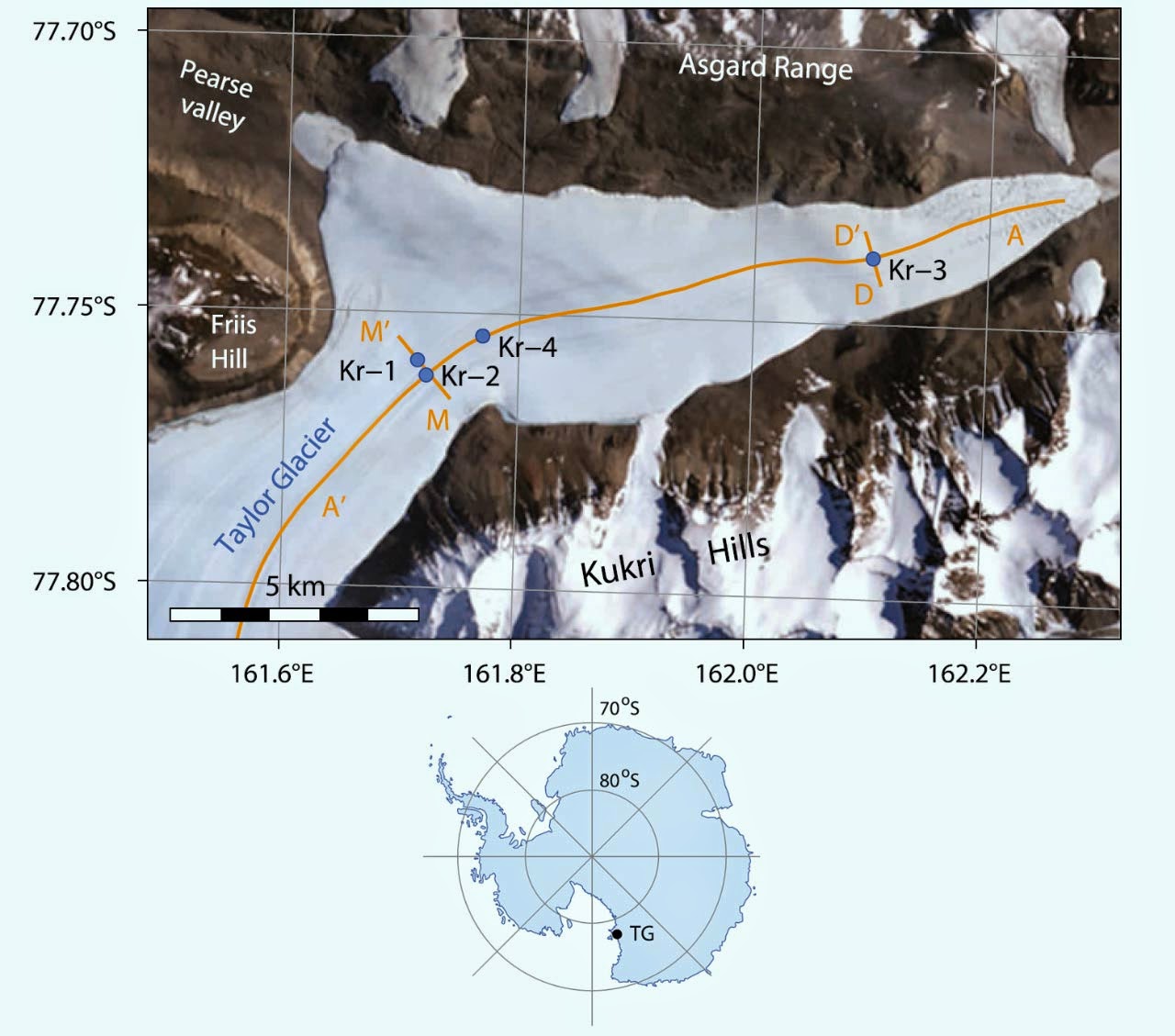
The new technique is much like the more-heralded carbon-14 dating technique that measures the decay of a radioactive isotope and compares it to a stable isotope.
Unlike carbon-14, however, krypton does not interact chemically and is much more stable with a half-life of around 230,000 years.
Carbon dating doesn’t work well on ice because carbon-14 is produced in the ice itself by cosmic rays and only goes back some 50,000 years.
Krypton is produced by cosmic rays bombarding our planet and then stored in air bubbles trapped within ice. It has a radioactive isotope, krypton-81, that decays very slowly, and a stable isotope (krypton-83) that does not decay.
Comparing the proportion of stable-to-radioactive isotopes provides the age of the ice.
In their study, reported in the Proceedings of the National Academy of Sciences, Dr Buizert with colleagues put four 350-kg samples of ice into a container and melted it to release the air from the bubbles. The krypton was isolated from the air and sent for krypton-81 counting.
They determined from the isotope ratio that the Taylor Glacier samples were 120,000 years old, and validated the estimate by comparing the results to well-dated ice core measurements of atmospheric methane and oxygen from that same period.
Now the challenge is to locate some of the oldest ice in Antarctica, which may not be as easy as it sounds.
“Most people assume that it’s a question of just drilling deeper for ice cores, but it’s not that simple. Very old ice probably exists in small isolated patches at the base of the ice sheet that have not yet been identified, but in many places it has probably melted and flowed out into the ocean,” explained co-author Dr Edward Brook of Oregon State University.
The scientists are hoping that the new technique will help identify ice that is more than a million years old, thereby reconstructing climate much farther back into Earth’s history.
“Reconstructing the Earth’s climate back to 1.5 million years is important because a shift in the frequency of ice ages took place in what is known as the Middle Pleistocene transition. The Earth is thought to have shifted in and out of ice ages every 100,000 years or so during the past 800,000 years, but there is evidence that such a shift took place every 40,000 years prior to that time,” Dr Buizert said.
“Why was there a transition from a 40,000-year cycle to a 100,000-year cycle? Some people believe a change in the level of atmospheric carbon dioxide may have played a role. That is one reason we are so anxious to find ice that will take us back further in time so we can further extend data on past carbon dioxide levels and test this hypothesis,” he concluded.
More Information : Christo Buizert et al. Radiometric 81Kr dating identifies 120,000-year-old ice at Taylor Glacier, Antarctica. PNAS, published online April 21, 2014; doi: 10.1073/pnas.1320329111
Note : The above story is based on materials provided by Sci-News










